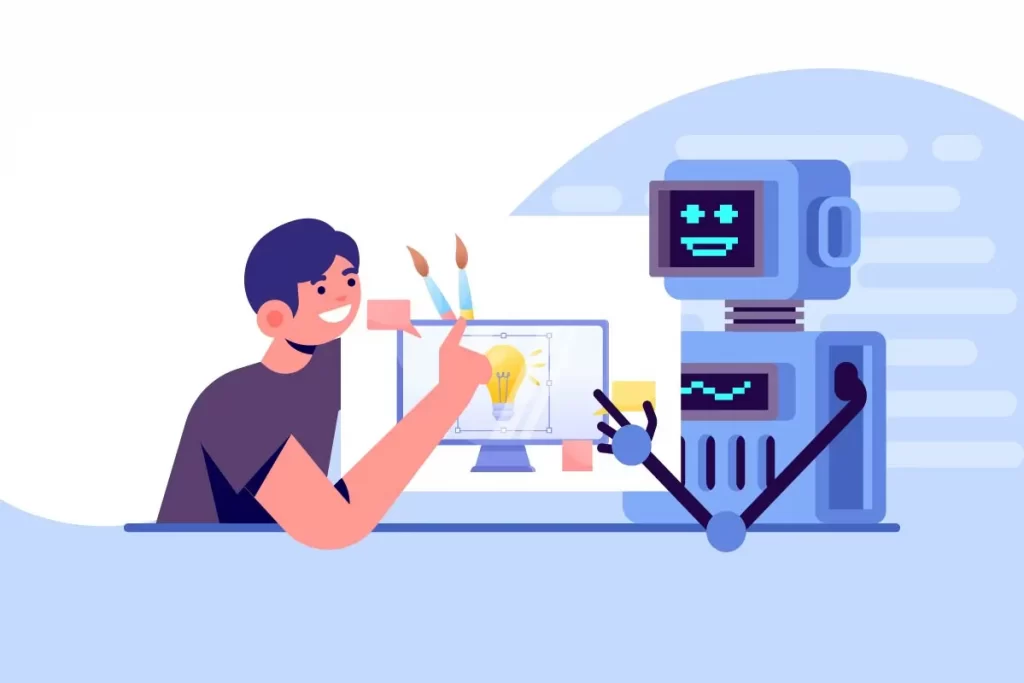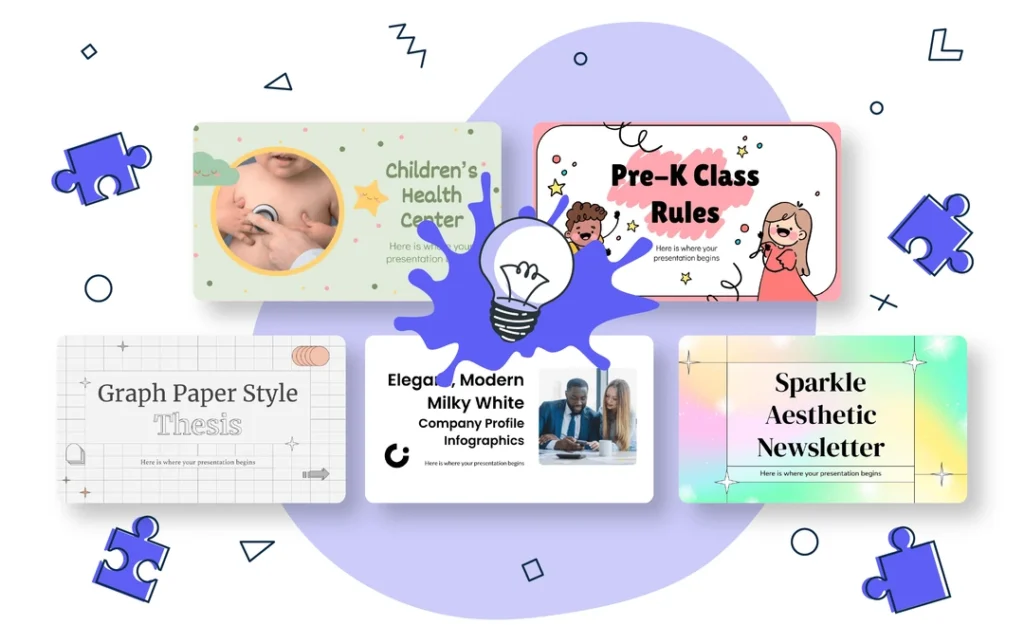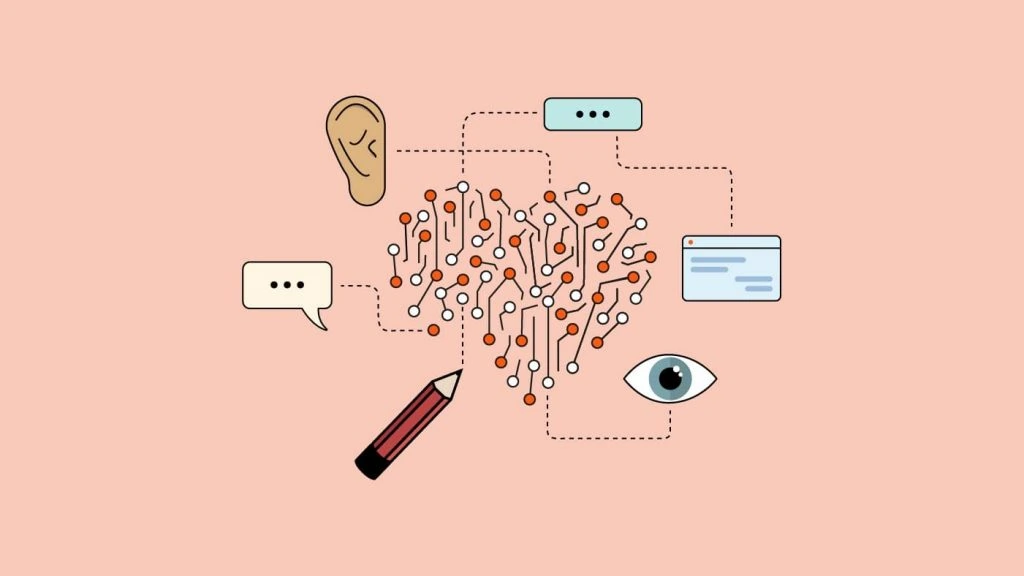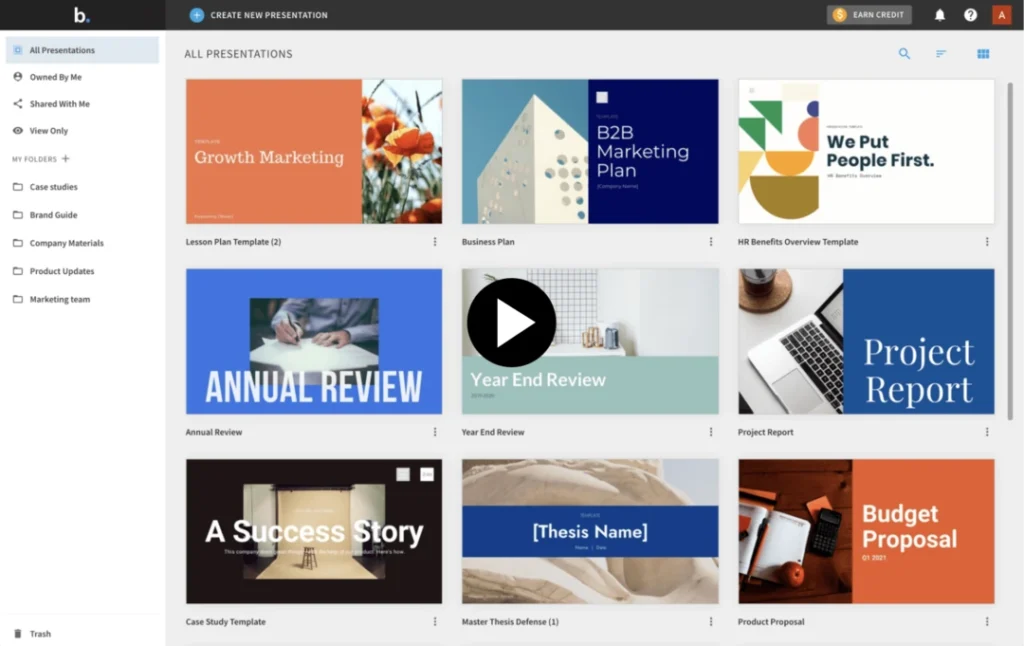How AI Presentations are Optimising Business Content on Social Media
Social media has truly transformed in the past decade. From being a mere platform for sharing personal updates and pictures, it has evolved into a powerhouse for businesses, creatives, and entrepreneurs.
In the early days, we witnessed plain text updates or simple images. Over time, the platforms integrated videos, stories, reels, and even AR experiences, giving brands many ways to reach their audience.
At its core, content on social media always has one objective: engagement.
This chase for better engagement constantly demands innovation in content delivery. High-quality videos, GIFs, infographics, and live streaming are just a few examples of how brands try to resonate better with their audience.
As they navigated through various content marketing tricks, it became evident that standing out was more challenging than before.
However, as the platforms matured, the competition stiffened. With every brand vying for the user's split-second attention, there was a pressing need for a differentiator, something more potent to give businesses that much-desired edge.
Enter artificial intelligence (AI). As vast amounts of data started pouring in with the proliferation of social media, it was only logical to think of ways to analyse this data for patterns, insights, and predictions.
Traditional analytics did provide a look into this, but AI took it many steps further. It could process vast amounts of information at lightning speed, derive meaningful conclusions, and predict future trends. But AI's role didn't just stop at analysis.
The exciting intersection came when AI began to be used in content creation. Suddenly, we had tools that could auto-generate graphics based on content, suggest edits to make a post more engaging, or even predict the best time to post content for maximum reach.
The potential of AI in crafting presentations that attract views and drive conversions became clear. Content was no longer about random creativity; it was now a strategic play backed by data and executed by intelligent algorithms.
This emergence of AI doesn't undermine the human touch in content creation. Instead, it augments it. It equips designers, creators, and entrepreneurs with insights that were previously impossible to derive.
As we delve deeper into the transformative power of AI presentations and the subsequent sections, one thing becomes clear: AI is not just the future; it's the present that's reshaping our approach to social media content.
- The Shift from Traditional to AI-Enhanced Presentations
- Why AI Presentations?
- Benefits for Designers and Creatives
- Entrepreneur's Perspective on AI in Social Media Presentations
- From Passive Views to Active Conversions
- Challenges in AI Presentations and How to Overcome Them
- Future of AI Presentations on Social Media
- Conclusion
The Shift from Traditional to AI-Enhanced Presentations

In the initial days of social media, business content was relatively straightforward. Brands and enterprises would post updates, share images, and occasionally roll out videos, hoping to engage their audience.
However, as the digital sphere saturated and the competition fierce, a pressing need arose for distinctive content that captivated and converted. Enter presentations.
Once confined to boardrooms and business meetings, presentations have found their way onto social platforms. They offer a condensed form of conveying information, telling a brand's story, or explaining complex concepts, making them appealing to designers, creatives, and entrepreneurs looking for innovative mediums.
Yet, as the dynamics of social media evolved, so did the audience's expectations. The static slides of yesteryear no longer cut it. This is where an ‘AI presentation maker‘ made its mark.
AI-enhanced presentations offer an unprecedented edge. Instead of manually sifting through heaps of data or spending hours on design, tools that can ‘convert text to presentation' have emerged.
These tools, powered by artificial intelligence, could transform a chunk of text into visually appealing slides with relevant graphics, transitions, and more.
But why the shift to AI? Simply put, the digital landscape's rapid pace has made it almost impossible for creatives and businesses to keep up without some level of automation. With AI presentation makers, one could craft tailored content, ensuring it resonated with the target audience while maintaining a professional sheen.
Moreover, these AI-driven tools provide invaluable insights, analysing user interactions and suggesting optimisations for better engagement and conversion rates.
For designers and creatives, transitioning from traditional to AI-enhanced presentations is not just about staying updated. It's about harnessing the power of technology to produce content that's not only visually compelling but also contextually relevant.
For entrepreneurs, it means streamlined processes, cost-effective solutions, and a higher probability of catching the viewer's eye amidst the vast social media content.
In essence, the transition to AI-enhanced presentations encapsulates the ever-evolving nature of social media. With AI tools in their arsenal, businesses are better equipped to navigate the intricate dance of engagement and conversion on digital platforms.
Why AI Presentations?

In the digital era, where the average user's attention span has dwindled, standing out in the crowded space of social media is paramount for businesses. While valuable, traditional content creation methods often lack the dynamism required for today's ever-evolving audience.
Enter AI presentations: a fusion of technology and content with immense potential for designers, creatives, and entrepreneurs. But why are AI presentations becoming the go-to for savvy businesses?
Enhancing visual appeal for better engagement
First, let's address the undeniable: aesthetics matter. AI-driven designs capture users with unmatched visual appeal in a sea of monotonous posts. It's not merely about adding a splash of colour or a fancy font; AI analyses many data points to determine what truly resonates with audiences.
For designers, this means a treasure trove of insights at their fingertips, empowering them to craft beautiful and engaging designs. The algorithmic precision of AI can predict colour palettes, design layouts, and even typography styles that are currently trending, ensuring that content is not only timely but also visually striking.
Personalising content for diverse audiences
The days of one-size-fits-all are long gone—today's audiences hail from varied backgrounds with unique preferences and tastes. AI presentations excel at catering to this diversity.
By analysing user behaviour, location, preferences, and more, AI tools can personalise content in real-time, ensuring that what a user in London sees might differ slightly from what a viewer in Glasgow sees, making it more relevant and relatable.
For creatives, this means their designs and messages reach the viewer's heart, fostering a deeper connection between the brand and the audience.
Quick adaptations based on real-time data
In the fast-paced social media, trends can shift overnight. What's in vogue today might be passé tomorrow. AI presentations are built for this very volatility. They adapt swiftly, leveraging real-time data.
AI can adjust it if a design element doesn't generate the expected engagement. Entrepreneurs benefit immensely from this agility, ensuring their brand messaging remains potent and effective without enduring lengthy redesign processes.
In conclusion, AI presentations are not a mere tech novelty. They are the next logical step for those eager to harness the full potential of social media content.
By blending aesthetics, personalisation, and adaptability, they offer an unparalleled edge in today's digital age, making them indispensable for the forward-thinking creative community.
Benefits for Designers and Creatives
Staying updated with the latest tools and techniques is paramount in the dynamic digital design world. Optimising designs can mean the difference between a passive view and active engagement in social media, where content has mere moments to capture attention.
AI's not just about robots and sci-fi dreams; for designers and creatives, it's revolutionising how we approach design.
AI Tools: Aiding in Automating Design Processes
Historically, many designers might have perceived the onset of AI with a hint of apprehension. The concern was centred around originality – would machines surpass human creativity?
However, reality has been more harmonious. AI doesn't replace designers; it complements them. Tools like AI-driven graphic generators or colour palette recommenders speed up the design process, eliminating the need for mundane tasks and leaving creatives with more time for conceptualisation and iteration.
The Blending of Creativity with Data: Crafting Compelling Stories
Data-driven design isn't new, but AI has elevated its potential. With AI, creatives can now access insightful analytics, helping them understand user preferences, behaviours, and trends. This isn't just raw data; it's actionable information.
For instance, a designer can get insights into which visual elements resonate more with a particular demographic, allowing for content customisation. The result? Stories that don't just look good but also connect deeply with the audience.
Case Studies: Successful AI-enhanced Designs that Led to Increased Conversions
To illustrate, consider a recent campaign by a prominent fashion brand. By leveraging AI, they analysed thousands of user interactions to determine which design elements garnered the most attention, from colour schemes to typography. The subsequent campaign, which amalgamated these insights, saw a 30% rise in engagement and a notable boost in conversions.
Another example is a startup that used AI to A/B test their banner designs on social media. The AI-assisted version, unsurprisingly, outperformed the others, leading to higher click-through rates and more sales.
Entrepreneur's Perspective on AI in Social Media Presentations

In today's fast-paced digital age, entrepreneurs continuously seek innovative ways to optimise their business operations and marketing efforts.
AI-powered presentations on social media platforms offer a promising solution, especially when considering its cost-effectiveness, scalability, and real-time adaptability.
Cost-effectiveness and Scalability of AI-powered Tools
For startups and SMEs (small and medium-sized enterprises) with limited budgets, the cost of hiring dedicated design teams for social media campaigns can be a significant barrier.
This is where AI-driven tools come into play. They reduce the need for manual design efforts and provide an avenue for creating high-quality, professional-looking content without breaking the bank. Moreover, as the business grows, these tools can quickly scale to meet increased demands, ensuring that costs remain predictable.
Staying Ahead in the Competitive Social Media Landscape
The social media sphere is incredibly saturated, with millions of posts being shared daily. Entrepreneurs face the daunting task of ensuring their content stands out and resonates with their target audience.
AI presentations can analyse vast amounts of data to determine what's trending and what appeals to specific demographics. Businesses can craft timely and relevant content by leveraging this data, giving them a competitive edge.
Real-time Feedback: Making Immediate Amends to Improve Campaigns
One of the most significant advantages of AI tools is their ability to provide instantaneous feedback. Traditional campaigns require weeks, if not months, to gauge their effectiveness.
However, with AI, entrepreneurs can receive real-time insights into their Presentations' performance. Are viewers dropping off after a specific slide? Is a particular design element not resonating? Entrepreneurs can get answers to these questions almost immediately.
This rapid feedback loop allows for swift amendments, ensuring campaigns remain effective and continually evolve based on user interaction.
From Passive Views to Active Conversions

In today's digital age, merely gaining views is no longer the pinnacle of social media success. The objective success metric for businesses, designers, and entrepreneurs is how well those views translate into active engagement or conversions. Herein lies the transformative power of artificial intelligence (AI).
Understanding user behavior through AI analytics
Historically, understanding user behaviour was often a mix of educated guesses and long-drawn analytics. Now, AI has changed the game. Through deep learning and neural networks, AI can analyse vast datasets at unprecedented speeds.
This means a treasure trove of insights is available for creatives and designers. They can discern which colour palettes resonate more with viewers, which type of content keeps audiences engaged, and which design layouts drive better engagement.
Instead of trial and error, designers have data-driven insights to guide their creations, ensuring their content isn't merely viewed but elicits a reaction.
The power of AI in predicting content trends and preferences
Predicting the next ‘big thing' on social media has always been challenging. However, with its predictive algorithms, AI offers a glimpse into the future. AI can forecast trends by analysing patterns, user interactions, and global events.
For entrepreneurs, this predictive power means they can be at the forefront of these trends, allowing them to tailor their content strategy in advance.
For instance, if AI predicts minimalistic design will be the trend for the next season, businesses can start incorporating that into their content, staying ahead of the curve and resonating more with their audience.
Strategies to increase CTA (Call to Action) responses
Arguably, the most crucial aspect of any content piece is its CTA. It's the bridge between passive viewing and active engagement. AI can optimise CTAs by analysing which prompts work best for specific demographics.
For example, a younger audience might respond better to an informal, direct CTA, while older viewers might prefer something more formal and explanatory.
Designers can use these insights to craft CTAs that blend seamlessly with their content and effectively drive the desired action, whether signing up for a newsletter, purchasing, or sharing the content.
AI has elevated content creation from an art to a science, intertwining creativity with data-driven decisions. For anyone in design, entrepreneurship, or content creation, embracing AI means enhancing views and ensuring those views lead to tangible results.
Challenges in AI Presentations and How to Overcome Them

The digital realm has been revolutionised with the dawn of artificial intelligence (AI). From predicting user behaviours to automating mundane tasks, AI has become a formidable force, particularly in the content creation sector.
As with every innovation, AI presentations are not exempt from challenges. For designers, creatives, and entrepreneurs eager to harness its potential, it's pivotal to understand these challenges and devise strategies to counteract them.
Ethical Concerns: Authenticity of AI-generated content
One of the most voiced concerns revolves around the authenticity of AI-generated content. While AI can produce visually stunning graphics and coherent text, there's a looming question: can it genuinely replicate the originality and intent a human designer brings? The risk of inadvertently plagiarising or producing generic designs is palpable.
Solution: Always use AI tools as a collaborative partner. Allow it to aid with tasks like data analysis and initial designs, but ensure a human touch reviews and refines the outcome. This ensures authenticity and the unique flavour only a human can provide.
Maintaining a Balance: Human Touch vs. Automated Processes
Too much automation can result in content that feels sterile or lacks emotional resonance. Conversely, purely manual processes might need to improve AI's efficiency.
Solution: It's all about equilibrium. Designers should use AI to gather data, recognise patterns, or create basic design layouts. However, the final creative touch, the story that needs telling or the brand's voice, should be overseen and refined by humans. This guarantees content that resonates on both an aesthetic and emotional level.
Continuous Learning and Adaptation to Leverage AI Effectively
The landscape of AI is ever-evolving. What's avant-garde today might be passé tomorrow. For entrepreneurs and creatives, continuous evolution can feel overwhelming.
Solution:
- Dedicate time to learning.
- Engage in webinars, workshops, and courses focused on the latest in AI.
- Collaborate with AI specialists to stay updated.
The key is viewing AI as an evolving tool in your toolkit, not a static solution.
Future of AI Presentations on Social Media

The digital world is ever-evolving, and how we interact with social media is changing at a pace we've never experienced before. As AI continues to embed itself into our digital interfaces, what does the next decade have in store for designers and entrepreneurs using these platforms?
Innovations on the Horizon
It's impossible to predict with absolute certainty, but emerging trends suggest that AI will move from just creating content to understanding the nuances of human emotion. Imagine AI presentations that don't just look good but feel right, tapping into the viewer's psyche to create emotionally resonant content.
For designers, this means tools that can anticipate user reactions, adjusting colours, tones, and visuals based on the predicted emotional response of the target audience. We might witness the rise of 'empathetic AI', systems designed to understand and react to human feelings, elevating content from simply ‘engaging' to deeply ‘connective'.
Entrepreneurs can expect to harness more sophisticated AI-driven analytics. These will go beyond tracking clicks and likes, delving deeper into assessing audience sentiment and intention and predicting future trends. Rather than just adapting to the market, businesses might soon be able to anticipate and even shape it.
Embracing AI: A Collaborator, Not a Replacement
A common concern in the design and entrepreneurial communities is the fear that AI will replace the human touch. But, rather than seeing AI as a threat, it's more productive to view it as a collaborator.
Designers can use AI to automate repetitive tasks, giving them more time to focus on creativity and innovation. The uniquely human capacity for intuition, emotion, and subjective judgment is something AI can only replicate if it can mimic it to a certain extent.
AI is a valuable assistant for entrepreneurs, offering insights based on vast amounts of data faster than any human could. However, decisions driven solely by AI lack the nuanced understanding and vision that passionate entrepreneurs bring.
Conclusion
In the rapidly evolving digital landscape, the transformative power of artificial intelligence (AI) stands prominently, particularly in content optimisation on social media platforms. It's not just about the automation or the sophisticated algorithms; it's about the ability of AI to discern, adapt, and tailor content that resonates, engages, and prompts action.
From curating visuals that catch the eye to crafting narratives that touch the heart, AI's capabilities have transcended beyond mere technology; they're now a vital part of a brand's storytelling arsenal. Yet, as with all technological advancements, AI's true essence and impact lie in its code and collaboration with human creativity.
For designers and creatives, this isn't a call to see AI as a competitor but as a companion. Leveraging AI tools can elevate design aesthetics, refine creative narratives, and predict trends, ensuring that your content isn't just seen and genuinely experienced.
Entrepreneurs, too, find immense value here. A future-ready strategy isn't just about being present on digital platforms and thriving on them. And with AI, not only can they ensure that their brand narratives are optimised, but they can also make data-driven decisions that fuel growth.
AI isn't just a tool; it's a catalyst. A catalyst that can propel content from mere views to meaningful conversions, bridging the gap between brand intent and audience engagement.
So, it's high time for those at the nexus of innovation—designers, creatives, and entrepreneurs alike—to recognise and embrace the AI revolution. After all, the future beckons, and it's one where AI and human creativity coalesce to redefine content experiences.

